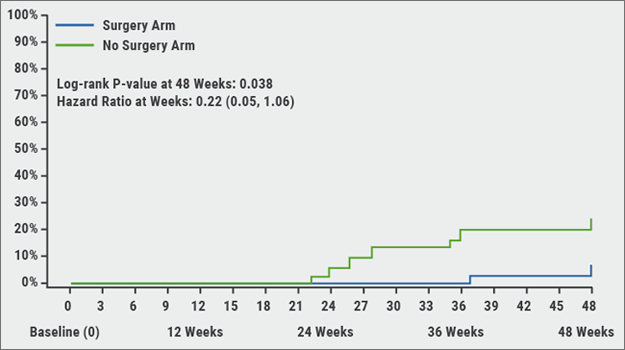The lung cancer risk prediction model PLCOm2012 is a validated logistic regression lung cancer risk prediction model based on data collected from the control arm of the PLCO trial. This model uses historical and demographic data to identify individuals who should receive cancer screening. Previous studies have shown that biomarkers of tobacco exposure are associated with lung cancer, but they were never used in the prediction of lung cancer risk. Therefore, Dr Christine Lambert (University of Minnesota, USA) and her co-workers created a new lung cancer risk prediction model that incorporated 3 tobacco biomarkers into the PLCOm2012 model: serum cotinine level, NNAL, and PheT [1]. Cotinine is a metabolite of nicotine. Both NNAL and PheT are metabolites of polycyclic aromatic hydrocarbons (PAH), which are believed to be among the principal causative agents for lung cancer in smokers [2]. This case-control study was performed with the aim to assess whether including these biomarkers can improve the prediction of 6-year lung cancer risk.
Lung cancer cases (n=72) diagnosed within 6 years of PLCOm2012 randomisation –to match the prediction time frame of this model– were compared with 115 cancer-free controls drawn from current smokers in the screening arm of PLCO. Smoking-pack years and levels of the 3 tobacco biomarkers were higher in lung cancer cases compared with controls. “In the logistic regression model, the PLCOm2012 was a significant predictor of lung cancer risk,” Dr Lambert said. In contrast, all 3 biomarkers did not predict lung cancer risk after accounting for the PLCOm2012 risk score. “The addition of biomarkers did not improve the performance of the prediction model for lung cancer risk compared with the PLCOm2012 model alone,” concluded Dr Lambert. Lack of study population diversity and heavy smoking amongst cases and controls may have limited the tobacco biomarker effect and its predictive ability.
- Lambert C, et al. Use of tobacco biomarkers in lung cancer risk assessment. Session TP136: Thematic Poster session: Lung cancer, thoracic oncology. ATS 2021 International conference, 14-19 May 2021.
- Yuan JM, et al. Cancer Res 2011:71:6749-57.
Copyright ©2021 Medicom Medical Publishers
Posted on
Previous Article
« Vaping identified as risk factor for asthma Next Article
Air pollution in winter linked to more hospital admissions in ILD patients »
« Vaping identified as risk factor for asthma Next Article
Air pollution in winter linked to more hospital admissions in ILD patients »
Table of Contents: ATS 2021
Featured articles
Letter from the Editor
COVID-19: What Pulmonologists Need to Know
Antibody treatment for COVID-19: a combination is successful
Air pollution: an underestimated negative prognostic factor for COVID-19
Healthcare workers vulnerable to SARS-CoV-2 infections
Genetic risk variants responsible for COVID-19 predisposition
Asthma – An Update
“As-needed” inhaled corticosteroid therapy for mild asthma – what is the evidence?
IL-4/13 blocker successful in treatment of paediatric moderate-to-severe asthma
Benralizumab lives up to its phase 3 results in real-world findings
Tezepelumab – good success rates in various types of severe asthma
Sleep Disorders – An Underestimated Problem
OSA: A risk factor for earlier cognitive decline
Subgroup of patients with high heart rate response and coronary artery disease benefit from CPAP
Association between positive airway pressure treatment adherence and COVID-19 infection rates
COPD – What Is New
Possible aetiologies for COPD exacerbations – more evidence is needed
Does COPD plus COVID-19 equal higher mortality?
Biomarkers for acute exacerbations in COPD are required
Severe exacerbations: A key driver of all-cause mortality in COPD patients
Men and women with COPD differ in many ways
Younger adults with COPD at higher health risk than previously thought
Metabolic Dysregulation and Lung Disease
Obesity: A risk factor for new-onset asthma and worse asthma control
Metabolic dysfunction and lung disease: children are no small adults
Best of the Posters
Air pollution in winter linked to more hospital admissions in ILD patients
Tobacco biomarkers do not improve prediction of lung cancer risk
Vaping identified as risk factor for asthma
Related Articles
November 28, 2019
Registry confirms nintedanib efficacy under real-life conditions
November 7, 2018
IPF introduction and Pentraxin-2

November 7, 2018
Gastroesophageal reflux, IPF and lessons learned
© 2024 Medicom Medical Publishers. All rights reserved. Terms and Conditions | Privacy Policy
HEAD OFFICE
Laarderhoogtweg 25
1101 EB Amsterdam
The Netherlands
T: +31 85 4012 560
E: publishers@medicom-publishers.com

